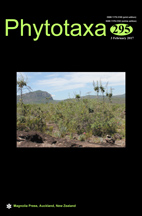Abstract
A targeted amplicon-based metagenomics approach (metabarcoding) provides detailed access to the diversity of the mycobiome in any substrate in distinct environments on Earth. Fungi are the main decomposers of lignocellulosic woody debris in terrestrial forested ecosystems, contributing significantly to the global carbon cycle. The main objectives of this study were to assess the fungal taxonomic diversity in fallen woody debris samples from two Neotropical forest fragments (rainforest and seasonal forest), to analyze the qualitative and quantitative components of the taxonomic diversity, and to investigate the functional diversity of the ecological groups detected. Our study comprised three main methodological steps: (i) sampling in the field; (ii) extraction of DNA, amplification of targeted segments and massively parallel sequencing; and (iii) data analysis and interpretation. A total of 110 molecular operational taxonomic units showing sequence similarity of 95% or more across the two collection sites using two DNA metabarcoding markers (ITS1 and ITS2) were assigned to putative fungal genera in 59 families, 27 orders, and 3 phyla. The number of putative fungal genera and the relative abundance of reads for each genus are higher in the tropical rainforest site than in the tropical seasonal forest site. Most of the identified genera are ligninolytic and cellulolytic and/or hemicellulolytic Basidiomycota (Agaricomycetes) and Ascomycota (Sordariomycetes), but “sugar fungi” and fungi associated with plants and detritivorous insects were also detected. This is the first study using NGS as a rapid and large-scale useful strategy to uncover the diversity of wood-decaying fungi in tropical forests.

